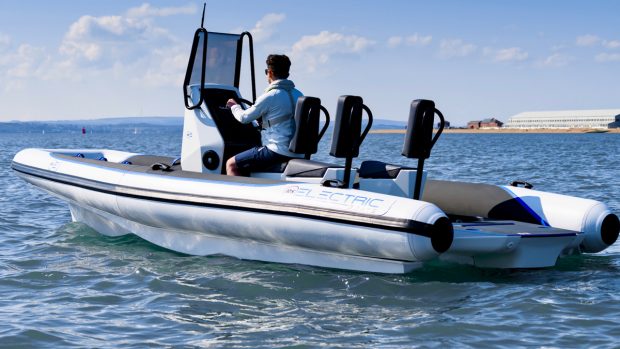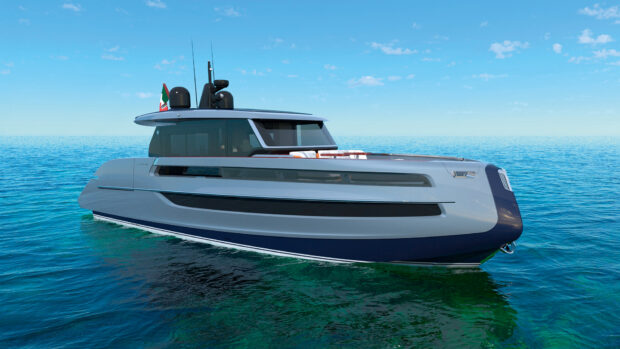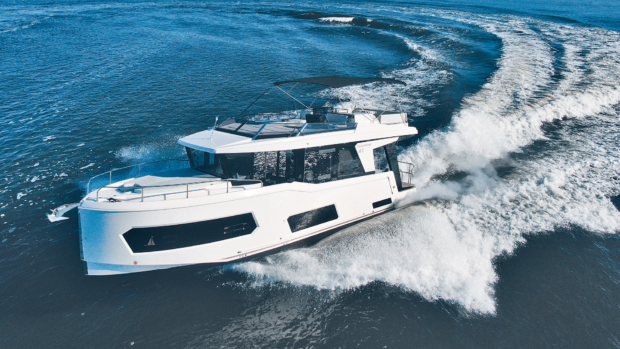Scott and Mary go to Agentina to extend their visas and the installation of their batteries is an adventure in itself
Position: Oxxean Marina Puerto Montt, Chile (yup, still marina queens)
Scott (YT) and Mary Flanders (MS) left Gibraltar on 16 September 2006, and we’ll be following their journey every step of the way, thanks to this unique online “blog”. For a complete list of all the couple’s blog entries click here
Scott and Mary ventured to Agentina to extend their visas and the installation of their new batteries was an adventure in itself
Friday 22 February
TheEgret crewhas returned from our last venture into Argentina until who knows when. It was good to get back to the land of one thirds (everything except hard goods costs a third of the price of here), Argentine beef and friendliness. We took the five-star bus service both ways complete with stewards, movies and toilets. The ride through the high foothills of the Andes pass was as beautiful as expected. Along the way we passed miles of long freshwater lakes surrounded by mountains. La Villa de Angostura is in the Los Lagos (The Lakes) region of Chile/Argentina. Angostura itself is a shameless, purpose built tourist village like many we have seen in Colorado. Still it is quaint and well done. The main street and side streets are little money traps we couldn’t resist. First we bought some Salomon water shoes to wear in the South Pacific, then we decided to get rid of the excess pesos we had retrieved from an ATM by picking up some gifts and some boxes of Argentine chocolate before catching the bus ride back. Our room is best described as early tenement or modern slum. It is in a purpose built boarding house with 14 or so rooms and a dining room and sitting room. It must have been built a long time ago but it is clean and we got what we paid for.
Both the Chileans and Argentines are serious about border crossings. Bus travellers have it easier than private cars but it still takes up to an hour in each station, each way. On both sides of the border there are drugs dogs and the Chileans offloaded all the baggage and ran it through a scanner. We had to take our backpacks to be checked as well. While in Angostura we saw a headline in an Argentine newspaper that said 440,000 Argentines are on cocaine – about 1% of the population. This is very sad. Chile doesn’t allow any fruit or food to cross the border either so Mary and I both wolfed our sandwiches and fruit down before we left the bus. Overall it was a fun experience. The upside is that we now have another 90 days inside Chile.
Our computer issues are winding down with just a couple of things to sort. Thankfully we have professional help as we would be doomed without it. It just goes to show how fragile our situation is when it comes to the mysteries of the black box. This is a lesson we know well and the reason we have so much backup. We would never head offshore without being thoroughly confident that all of our computer issues were sorted.
Speaking of offshore, our group of new friends are leaving within a week. Three are headed south (one has already left) and three west to New Zealand. One of the southbound boats, which is English speaking, has been traveling for two years with two young children. It is a very modest production sailboat with modest gear. The boat arrived in Puerto Montt after passage from Panama to the Galapagos to Chile with the intention of travelling to the Deep South. However, they are lacking in too many areas for this adventure to be possible, including overall cruising experience, weather forecasting, ability sufficient spares adequate research – the list of deficiencies goes on. One night we put on a clandestine ‘movie night’ showing slides and movies from an Australian boat. The Australian boat had various shots of spray everywhere and scraping ice off the bulkheads inside the boat. Slowly a picture of Deep South cruising emerged and We all encouraged the couple to spend this season cruising south to Laguna San Rafael, north of Gulf de Penas, heading west to New Zealand with the rest of the group and returning some other time to do the Deep South. This is what hey now plan to do thank goodness. I’m sure in time they will acquire the skills to travel further south but now is not the right time. I imagine when they do acquire the knowledge and skills to manage such a journey they will decide to change boats to something more robust for high latitudes or not go at all. There is no shame in this, just smart thinking. We ourselves didn’t make the Antarctic trip because we couldn’t get proper insurance coverage.
Batteries are another boat issue we have checked off. However, installation came very close to being a total disaster. I dissembled the battery cables and separated the 2 volt cells from each other in one bank (forward stateroom) after switching it off. The plan was to have the battery guys remove and replace that bank so I could hook everything up myself. I am very particular when it comes to boat things and batteries are high on the list. I used a product called Kopr-Shield by Thomas and Betts to coat the battery posts and connections. Kopr-Shield is a copper slurry which keeps out corrosion making a bulletproof connection. I shooed the battery guys off to a pot of Mary’s coffee while I did the first bank. All went well but the second bank, which was switched off (the first bank now being back in service with the new batteries) was now being taken apart by the technician, which was a big mistake. There were lots of sparks as he took the negative cables off first (instead of the positive,) which had two cables on that terminal. The power was being fed back from the solar panels (I was using the solar panels to boost the small battery charger to help keep up with our problematic freezer and it was my fault for not shutting them off). I was afraid the inverter and 50/60 cycle charger had been taken out along with the wind instruments. Fortunately the shop manager was right there watching and amazingly there was no damage except to that done to the technician’s ears and feelings when I let loose with a few expletetives. Criticism is best served cold, not red hot. As a double check we ran all of the batteries this morning to make sure that nothing had back fed to the starters or alternators. All was well.
Picture 1 shows the PT0 1, which is one of three boats used in Chile’s space program. Astronaut trainees are first strapped into shoes bolted to the pilothouse floor and then run through a wind against tide chop checking for seasickness. The second test is stepping out of the shoes and running back through the chop for weightless training. Surely there can be no other reason to have a pilothouse so far forward!
Picture 2 shows a boy trying desperately to enjoy his summer vacation at the beach despite his broken arm. This kid’s arm looked like a strange snorkel at times with his body under water.









